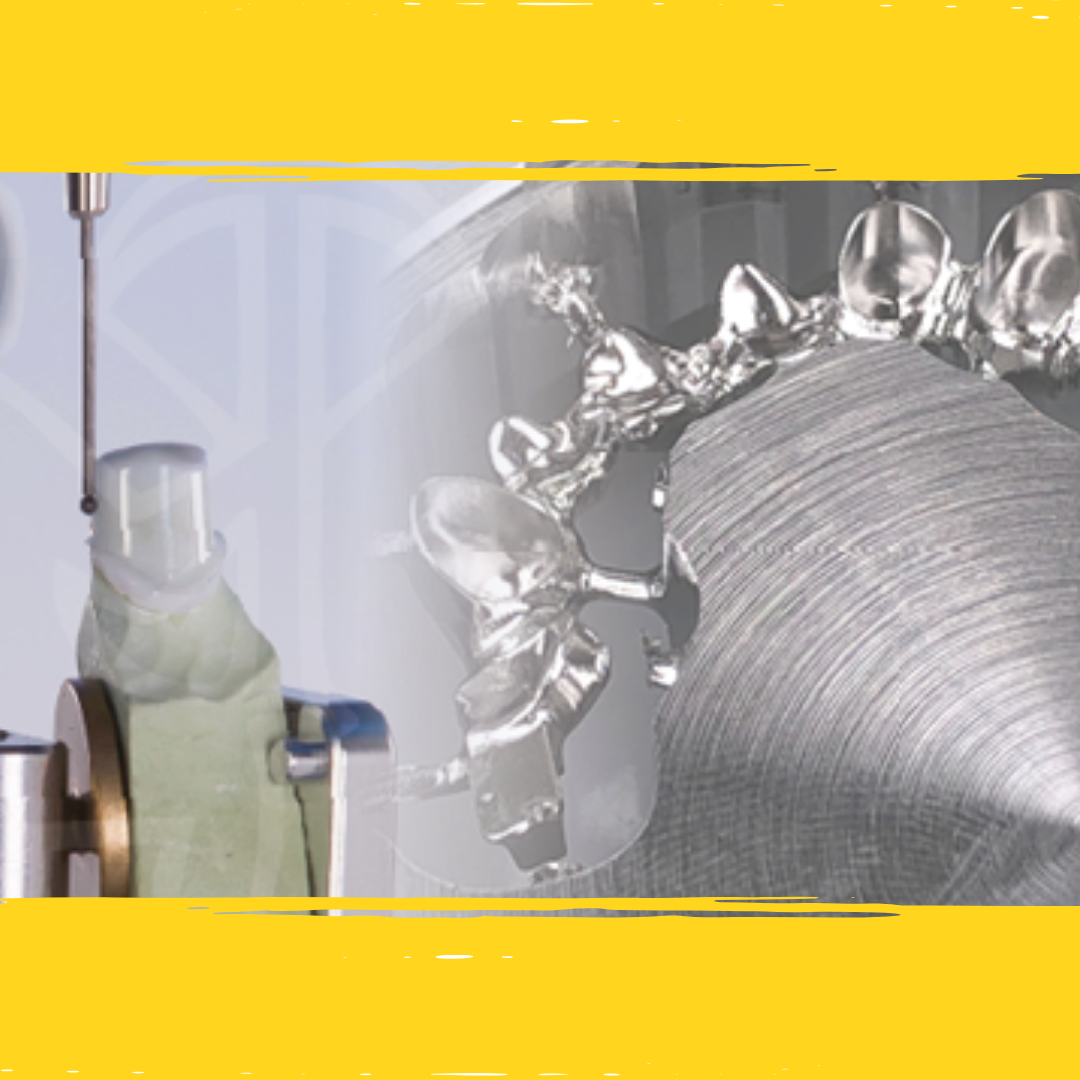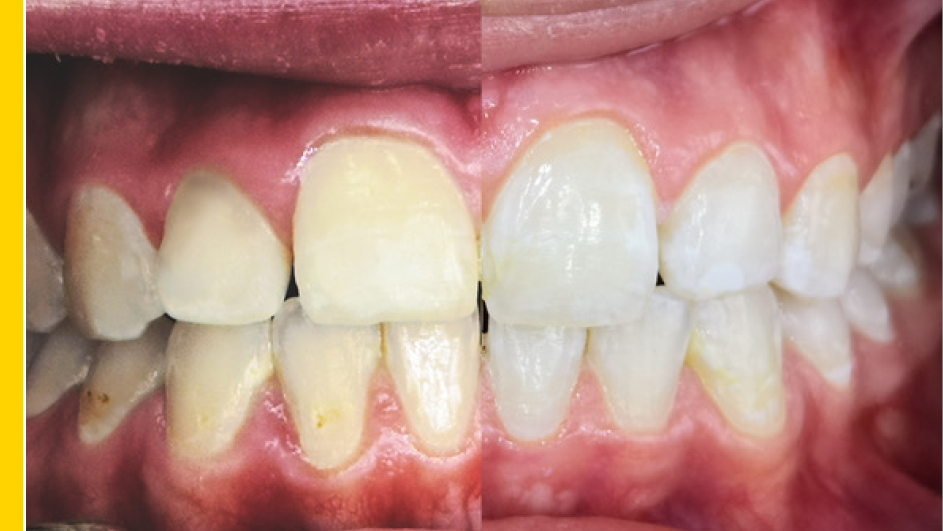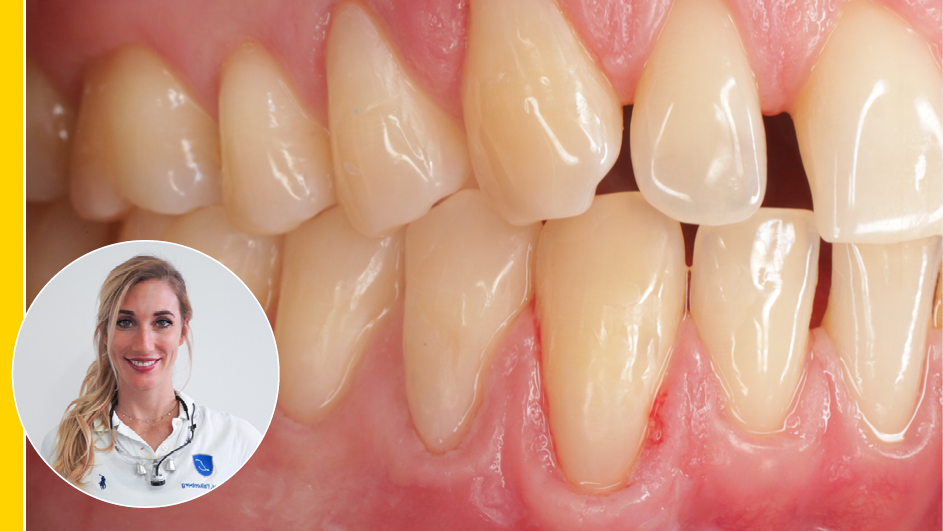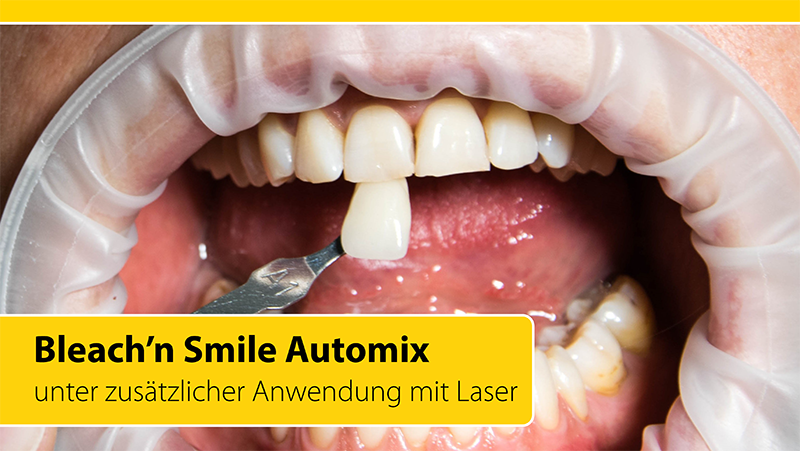Bleaching with "Bleach’n Smile“
In this case study, Dr. Beldoch and Dr. Valentin from Cologne show us their work and findings with our Bleach'n Smile system.
The selection of material, practical handling of it and correct application require professional care and control. In our surgery, we have been using "Bleach’n Smile Automix" (Schütz Dental, Rosbach) for many years now [Fig. 1]. In this article, we would like to show an example of this system’s application.

The patient presented in our surgery with a request for tooth whitening. Findings revealed severe tooth discoloration by drugs and multiple initial caries defects, especially on the tooth necks. Taking account of "white spot" lesions, a detailed explanation was given to the patient about the risks of bleaching, especially hypersensitivities in this connection. Initial photos were taken for documentation [Fig. 2] and the tooth shade was provisionally determined [Fig. 3]. The decision was made to bleach in the visible region, in this case 14-24 and 34-44.

Professional tooth cleaning
At the appointment agreed beforehand, professional tooth cleaning was initially carried out. Apart from the manual cleaning, a powder blasting device was used to thoroughly remove the existing surface discolorations. The pre-treatment finished with intensive polishing [Fig. 4].
Preparation
To protect the mucous membranes and gingiva, a cheek retractor was used. In addition, the "Dental Dam" (Schütz Dental, Rosbach) was thinly applied and progressively light-cured. The "Dental Dam" is applied directly from the syringe with the aid of the enclosed needles. To prevent blurring and thus time-consuming corrections, the "Dental Dam" was applied up to the last posterior tooth to be treated of each quadrant. If necessary, existing excess could be carefully removed with a scalpel [Fig. 5 & 6].

Bleaching
The bleaching is done with the "Bleach’n Smile" gel, which is applied to the vestibular surfaces of the teeth to be bleached directly from the syringe with the aid of the enclosed needle. Thanks to the existing color contrast with the "Dental Dam", a homogeneous covering of the tooth surfaces is easily accomplished, especially in the tooth cervix region. The distribution of the material onto the tooth surfaces can be improved directly with the needle or alternatively with a probe. The application is performed as necessary up to three times over up to ten minutes [Fig. 7].
In the current case, the gel was already removed after five minutes during the first application because of hypersensitivities that occurred, and after seven minutes in both the second and third applications. In the process, the gel was initially suctioned with a suction tip and the teeth then rinsed out thoroughly with water [Fig. 9]. To increase the effects for a short reaction time, the gel was activated using a curing light [Fig. 8]. After the final application, the "Dental Dam" was removed in one piece with tweezers and the mouth thoroughly rinsed out.

Another color determination was used to assess the effects. In the present case, brightening occurred by four shades (2M2 ‑> 1M2) [Figs. 10 & 11]. A white discoloration of the gingiva could be fully prevented by careful application of the "Dental Dam".

Follow-up care
To assist remineralization, "After Bleaching Care" (Schütz Dental, Rosbach) was applied to the treated teeth for about three minutes [Fig. 12]. After the reaction time, the gel was suctioned and the patient rinsed her mouth out thoroughly. During the follow-up checks carried out after four and 10 days, no hypersensitivities whatsoever could be detected. Nevertheless, a preventive intensive fluoridation of the teeth was recommended and carried out.

Discussion
When teeth are bleached, the question of damage resulting from that comes up time after time. With regular bleaching or risk groups (e.g. with multiple initial caries lesions like in the case study) in particular, it is absolutely essential to weigh up the benefits and risks with the dentist [1, 2, 3]. At the same time, the risks and consequential damage are minimal with correct application [1, 3, 4]. The brightening of the teeth by several color shades (four here) results in a clearly improved visual perception of the teeth and the face. The treatment can be repeated in the event of deterioration, although the duration of the effect depends on many factors (including nutrition, consumption of drinks and tobacco, initial color). With shorter intervals of a repetition in particular, advice by specialists is important for an adequate benefit-risk assessment. Finally, it can be said that dental bleaching is part of everyday practice in dental offices now, the risks and side effects minimal with proper and professional handling, and the effects very satisfactory. The application for the dental team can be simplified by kits like the "Bleach’n Smile Automix" and treatment thus made faster and more cost-effective.
Literature
1. Attin, T. Sicherheit und Anwendung von carbamidperoxidhaltigen Gelen bei Bleichtherapien. DZZ 01/1998, 11-6.
2. Attin, T., Kielbassa, A.M.: Die Bleichbehandlung - ein fester Bestandteil ästhetischer Zahnheilkunde. Zahnärztl Mitt85, 2674-2681 (1995).
3. Haywood, VB. History, safety, and effectiveness of current bleaching techniques and applications of the nightguard vital bleaching technique. Quintessence Int. 1992 Jul;23(7):471-88.
4. Li, Y. Toxicological considerations of tooth bleaching using peroxide-containing agents. J Am Dent Assoc. 1997 Apr;128 Suppl:31S-36S.
Download this case study as PDF file:
Read now!Authors

Hans-Offermann-Str. 5, 51107 Cologne
E-mail: info@zahnarztpraxis-waldbadviertel.de
Find out more about our Bleaching series
Please note:
This report is not intended as an instruction manual. The instructions for the materials and appliances used must be observed. The responsibility lies with the attending dentist.




